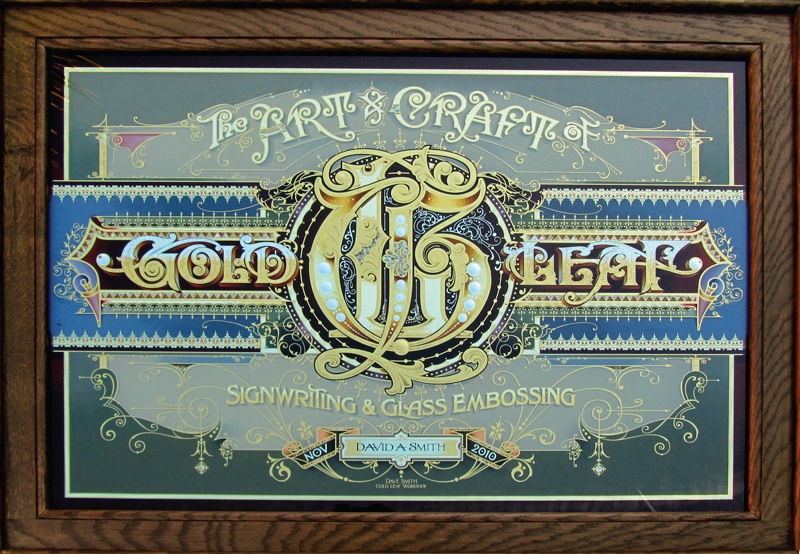Dave Smith, a Torquay, England-based, glass-gilding artist, has worked with goldleaf for 25 years. He began perfecting his trade through apprenticeship for a traditional, master-glass gilder. Earlier in his career, he fabricated dimensional signs, but he ultimately decided to sell his signmaking enterprise and focus solely on glass gilding.
“Through my shop’s evolution, I’ve found that I’m mostly working in niche markets for clients who want a very specialized type of glass signage or window graphics,” he said. “To be honest, it’s really changed my work. Focusing on a more specific market has made it easier to promote my work online, and therefore find new customers.”
He noted, “Facebook and Twitter pages are a good way to build a buzz about your work, but creating a video – which can be featured across many platforms – is the way to go for massive exposure.”
For most of his gilded designs, Smith prefers to sketch by hand over using software, but he acknowledged that integrating the two can create unique dimension and texture.
To begin every glass-gilding job, he cleans and sands the surface with cakes of Bon Ami soap (which has become increasingly hard to find in the U.S.), and prepares the pane for leaf application with size that’s a mixture of gelatin and distilled water (for optimal performance, he insists on a fresh gelatin package for every job).
For most jobs, he uses 23.75k, Italian leaf; a double gild is usually needed to create a sufficiently brilliant finish, Smith said. The preparation creates enough surface energy that the leaf “jumps” from the leaf sheet and gilder’s tip onto the glass.
Advertisement
His work demands far more intricacy than standard-issue 3-D letters. With a window or glass pane, the flat surface must have a textured appearance to captivate the viewer. Three techniques he uses are acid etching, which corrodes the gold and creates many different shades; creating stipple finishes with mica, which burns the gold into the glass and provides the illusion of depth; and brilliant cutting, for which he rolls a rotating wheel over the glass, which creates a desired profile. A felt wheel polishes the glass back to a clear finish, and then, chemical silvering, or gilding, creates the appearance of detailed, cut facets.
Smith created the original, gilded piece that was photographed and reproduced for the album cover of performer John Mayer’s latest release, Born and Raised. He scanned his original sketches and developed vectors using Gerber Scientific Products’ Omega 5.0, and built the artwork with Adobe Photoshop on his Wacom tablet.
“John said he had seen my work and discovered who I was through a web search, and he wanted me to create a piece that would become his album cover,” Smith said. “Developing the piece was a lengthy process – over a three-month period, we talked over Skype at least once a week – John was very easy to work with and the perfect client – he gave me the freedom to pursue my ideas.”



 Tip Sheet4 days ago
Tip Sheet4 days ago
 Business Management2 weeks ago
Business Management2 weeks ago
 Women in Signs2 weeks ago
Women in Signs2 weeks ago
 Real Deal5 days ago
Real Deal5 days ago
 Benchmarks17 hours ago
Benchmarks17 hours ago
 Editor's Note1 week ago
Editor's Note1 week ago
 Line Time2 weeks ago
Line Time2 weeks ago
 Product Buying + Technology1 week ago
Product Buying + Technology1 week ago









